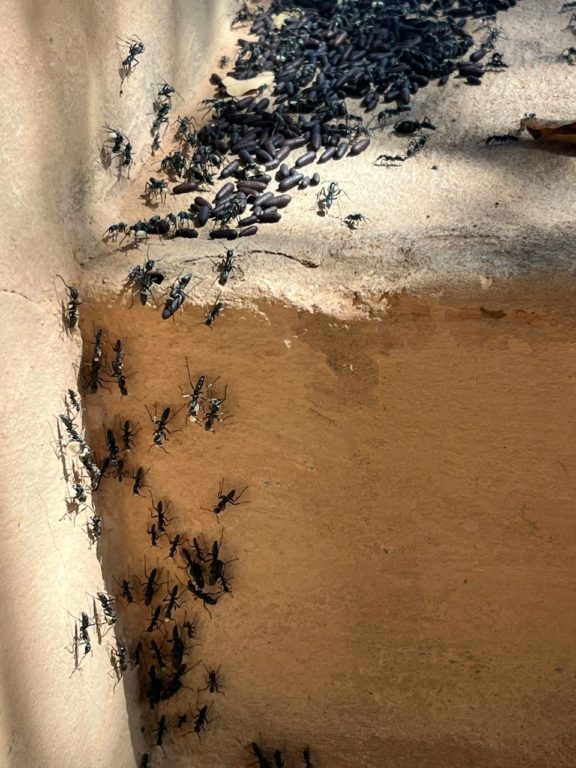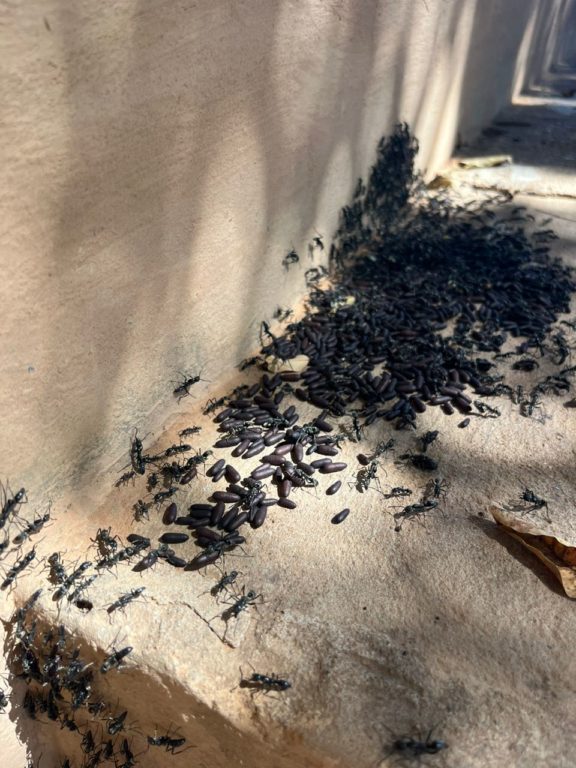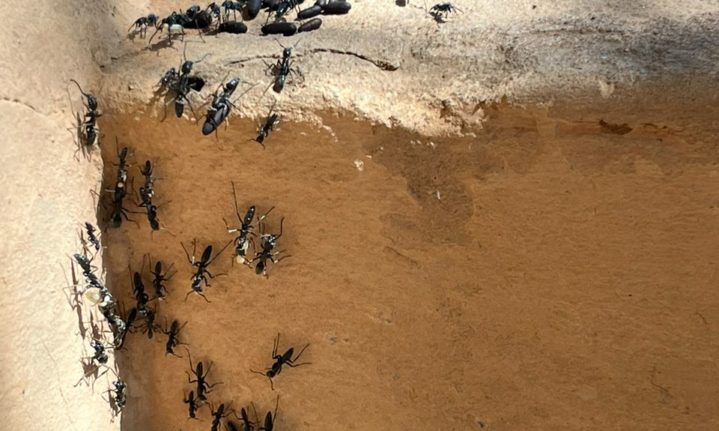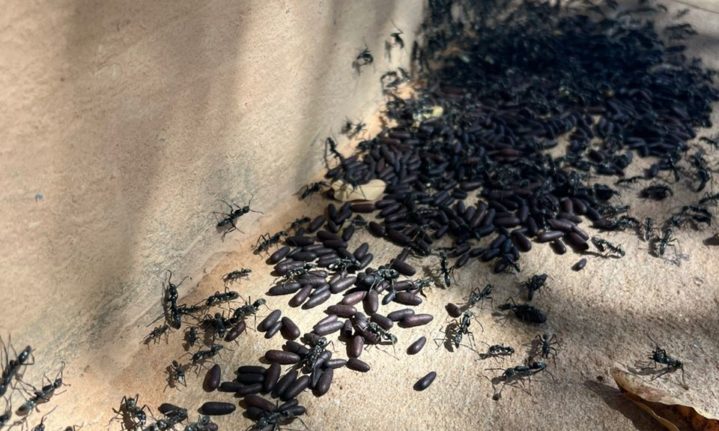Step into Royal Zambezi Lodge, where safari adventures are not just about the iconic African game but also the captivating tales of the “Mighty Minis.” From the industrious Matabele ants to the vibrant birdlife, this hidden world will ignite your curiosity and redefine your safari experience.
Written by Kim Barnett

In the bustling ecosystem of Lower Zambezi National Park, a tiny but mighty creature recently made the guides, managers and guests of Royal Zambezi Lodge stop in their tracks: the Matabele ant.
Renowned for their remarkable cooperative behaviour, Matabele ants have a captivating ability to transport their precious eggs en masse. Join us as we delve into the fascinating world of Matabele ants and uncover the secrets of their remarkable egg-moving skills.
The Matabele Ant society
Within the intricate social structure of Matabele ant colonies, each member has a designated role and purpose. These ants, formally known as Megaponera analis, form formidable raiding parties to hunt termites, their primary source of sustenance. Yet, what really sets them apart is their coordinated efforts to safeguard their colony’s future by transporting eggs.
The egg-moving spectacle

Pictures: Supplied
Lower Zambezi National Park in Zambia is known for its large populations of elephants, lions, leopards and African Wild Dog. Still, sometimes it is the little creatures that can be the most fascinating. Picture this: a parade of determined ants marching together in perfect harmony, carrying a multitude of eggs. It’s a mesmerizing sight to behold. Scientists have observed that when a Matabele ant colony decides to relocate, the entire population, including the queen, larvae, and workers, participate in this awe-inspiring egg-moving phenomenon.
The power of cooperation
Why do Matabele ants move their eggs en masse? The answer lies in the power of cooperation. By moving their eggs together, the ants effectively ensure the survival of their offspring. The collective effort helps to protect the eggs from predators, maintain a stable temperature, and prevent desiccation during the arduous journey to their new nesting site.
Communication and organization
The success of the Matabele ants’ egg-moving operation hinges on their remarkable communication skills and organizational abilities. Scientists have discovered that ants use a combination of chemical signals and tactile cues to coordinate their actions. This intricate communication network allows the ants to move in unison, ensuring the safe transport of their precious cargo.
Challenges and adaptations
Moving eggs en masse is no easy feat, and the Matabele ants have had to overcome several challenges along the way. For instance, navigating rough terrains, crossing streams, or avoiding potential hazards requires adaptability and problem-solving skills. Yet, despite these obstacles, the ants display remarkable resilience and determination to secure the future of their colony.
Lessons from Matabele Ants
The striking visuals captured at Royal Zambezi Lodge remind us of the power of unity and collective action. Matabele ants’ cooperative behaviour and the incredible feat of moving eggs en masse offer valuable insights into teamwork, adaptability, and survival strategies. There’s much we can learn from these tiny yet extraordinary creatures, such as the power of unity, effective communication, and the willingness to overcome obstacles for the greater good. The Matabele ants illustrate the saying, ‘If you want to go fast; go alone. If you want to go far; go together.’
ALSO READ: South Africa: The world’s largest exporter of big cats… and their parts
Follow us on social media for more travel news, inspiration, and guides. You can also tag us to be featured.
TikTok | Instagram | Facebook | Twitter

















